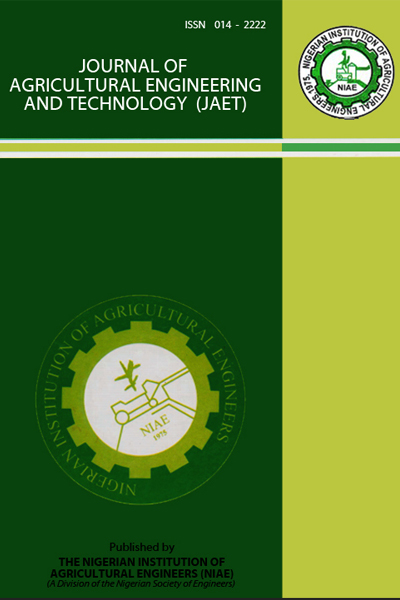SAP FLOW AND CANOPY CONDUCTANCE OF RAINFED CITRUS ORCHARD UNDER SUB-HUMID TROPICAL CONDITIONS
Keywords:
Sweet orange, lemon sap flow, canopy conductance, monsoon cloudsAbstract
Temperature difference method was used to measure sap flow in a seven-year-old citrus orchard during the transition (dry-wet and wet-dry) and peak rainfall periods. Canopy conductance (gc) of the orange was 6 by inverting the Penman-Monteith model. Transpiration rates were well-correlated with climate conditions during the three observation periods. On bright days, sap velocity was higher during the peak rainfall period (August, September) compared to the dry-wet (April) and wet-dry transition periods. However, significance negative correlations obtained between sap flow and wind direction for sweet orange and lemon during the wet-dry period suggests an advection of moisture from nearby water bodies lending to slight decrease in transpiration when such occurred. Average daily water use of lemon was about 7% higher than sweet orange. The ratio of canopy transpiration (Ec) to potential evaporation(Ep) varied from 43% - 65% and daily gC ranged from 2.2= 0.4 mm/s to 4.4 = 1.2 mm/s during the measurement periods. For higher values of vapor pressure deficit (VPD >1 kPa), sap flow showed a plane response indicating closure. Under this contrasting evaporative demand (1kPa to 3kPa), citrus trees were able to regulate their canopy conductance from 7 mm/s to 2 mm/s to maintain a near constant transpiration during the daytime. The good agreement between sap flow-based transpiration and climatic variable could be exploited to parameterize a simple mechanistic model to predict citrus water use under rainfed conditions of the study.


